A one-pot wonder for shabu shabu and other hot pot dishes, traditional donabe (Japanese clay pot) is made of special earthenware and is one of Japan’s oldest cooking vessels. Today, I‘ll show you how to season and care for your new donabe.
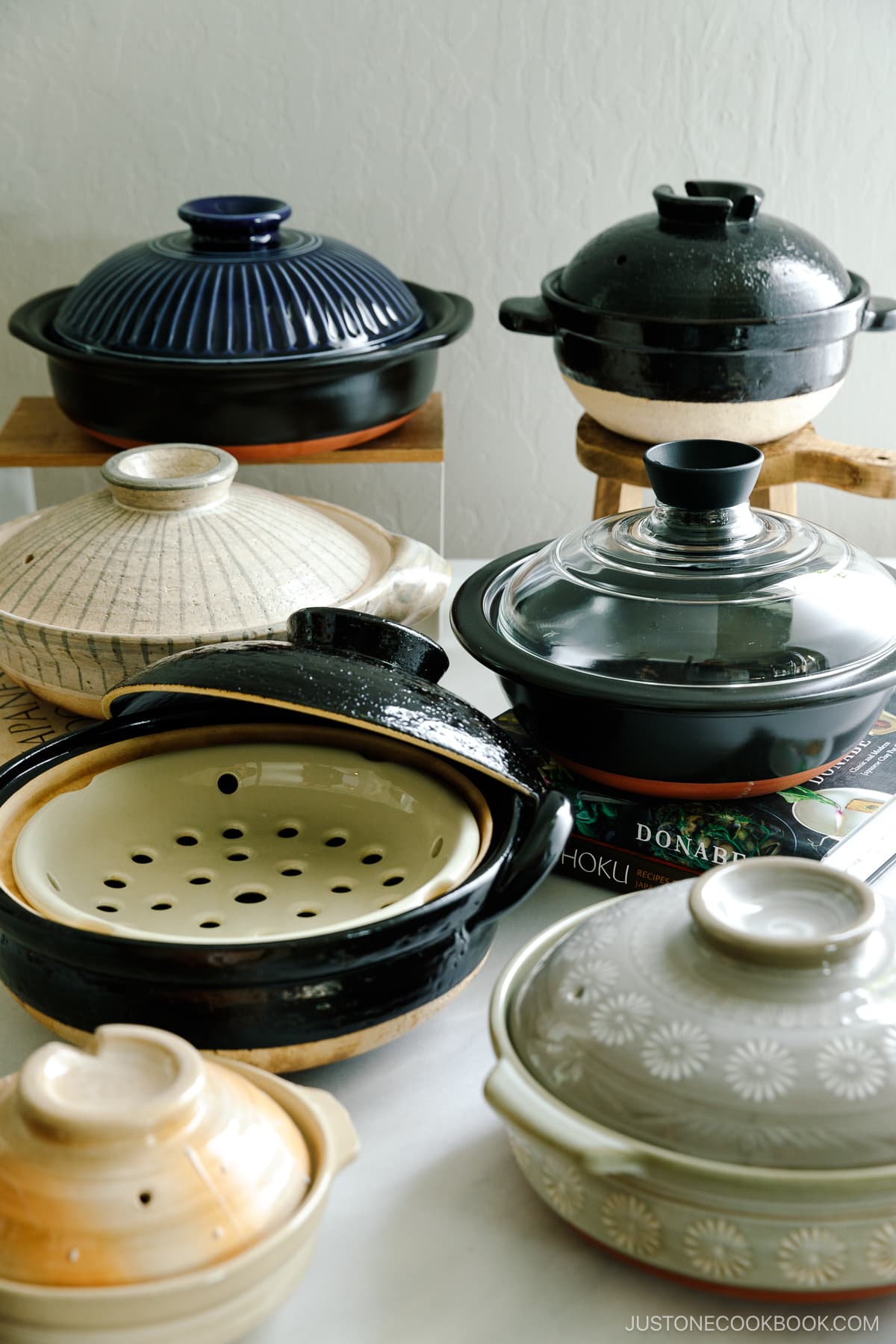
Once you purchase your first donabe (土鍋), a traditional Japanese clay pot, it’s time to season it before the first use. If you haven’t found a donabe yet, check out my donabe purchasing guide first. Since I received several questions from my readers about how to season and care for donabe, I’ll be covering some key points today.
Table of Contents
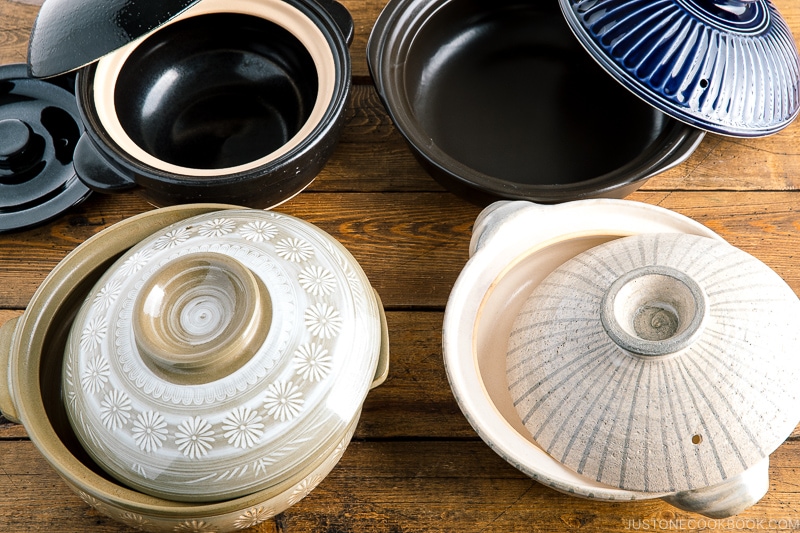
What is Donabe?
Traditionally made of special clay, donabe is a centuries-old cooking vessel from Japan. It is a highly versatile tool for today’s kitchen. Because it holds heat exceptionally well, it’s ideal for cooking hot pot dishes, soups, stews, and braised dishes. They’re also wonderful for steaming, roasting, and cooking the most delicious rice! Read more about this one-pot wonder in my post How to Choose the Best Donabe.
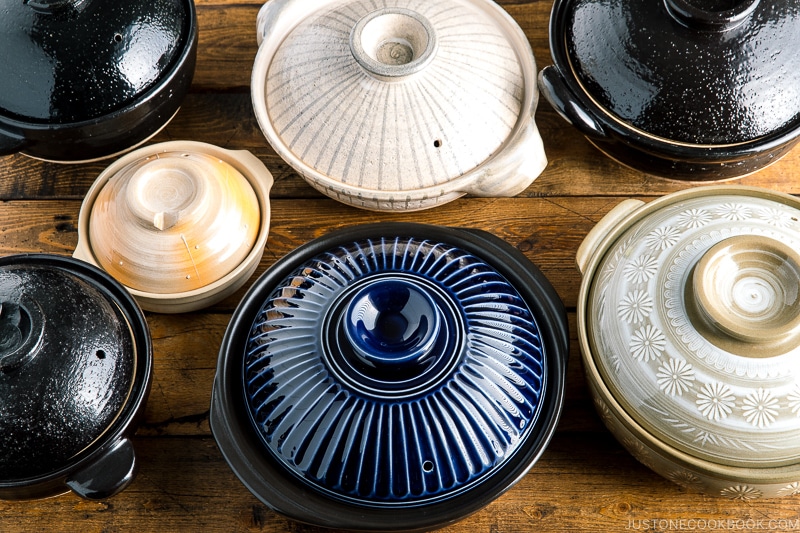
Why Season Your Donabe?
Clay pots have different characteristics depending on the material used. If you purchase a brand-new traditional donabe, you will need to season it before using it. In Japanese, we refer to this seasoning process as medome (目止め). Why does it need seasoning? Because the pot is made of clay, which is naturally porous.
To address this, starch from rice or flour will fill the microscopic pores in the pot, helping prevent breakage and damage from heat. Seasoning also helps prevent odors and stains from the food cooked in it. Therefore, the medome process helps extend the life of your donabe, as does proper care.
Donabe that need seasoning:
Traditional earthenware types of donabe pottery that you must season before first use include:
- Banko ware or Banko-yaki (萬古焼): Popular brands include Ginpo and Kagetsu.
- Iga ware or Iga-yaki (伊賀焼): The most popular brand is Nagatanien.
- Shigaraki ware or Shigaraki-yaki (信楽焼): Some popular brands are Kanefusa Seito, Hechimon, and Kumoigama.
Donabe that do not need seasoning:
Unlike earthenware donabe, ceramic pots (セラミック鍋) do not transfer odors and they absorb almost no water. Therefore, you do not need to season ceramic donabe before first use, including the following:
- Ginpo Brand’s Kikka Blue Donabe comes in No. 9 size (4 people) and No. 8 size (2-3 people).
- Hario Gohangama is a donabe rice cooker that I love. It’s quite sturdy, so I don’t worry about chipping.
- KINTO carries modern-style donabe pots like the KAKOMI IH donabe 2.5 L (3 people) and KAKOMI IH donabe 1.2 L (1-2 people).
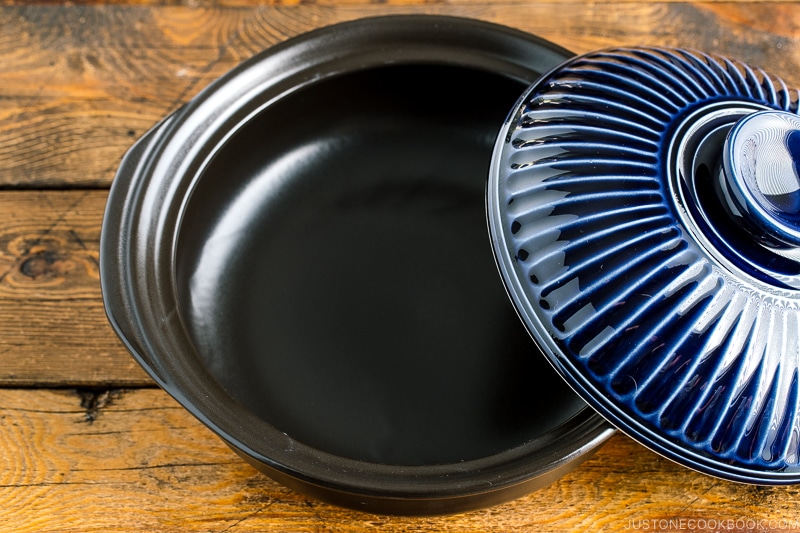
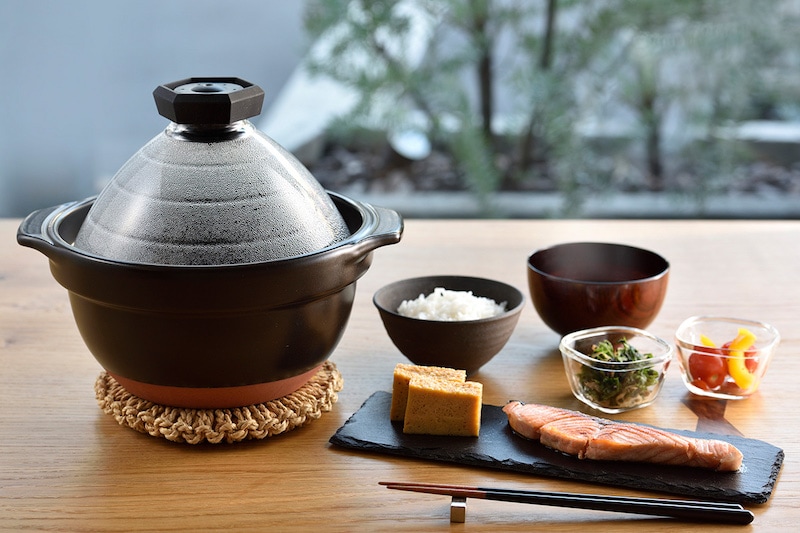
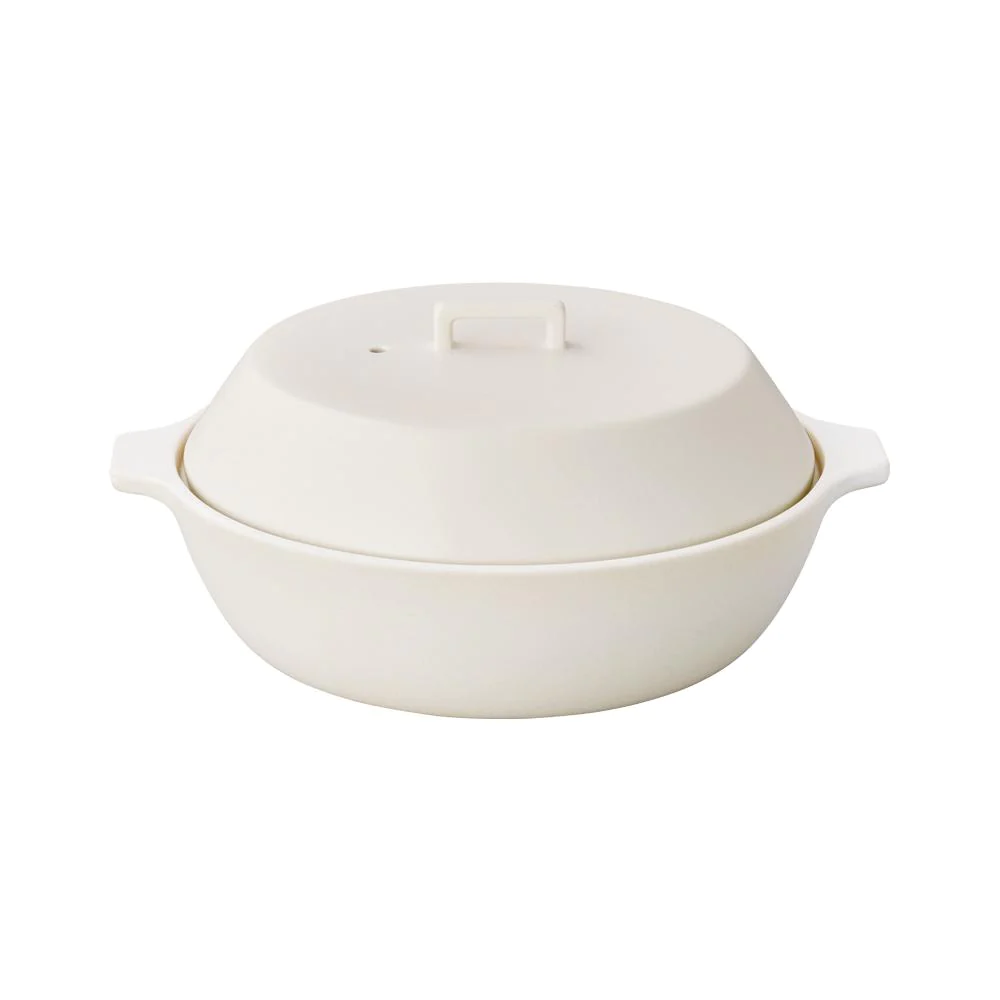
How to Care for Your Donabe (Must Read!)
Take good care of your donabe and it will last a lifetime. Donabe is fragile, especially with rapid temperature changes. There are a few things to remember when you care for your donabe.
- Make sure the bottom of the donabe is completely dry before using it on the stove. It will crack if you don’t dry it.
- DO NOT heat an empty donabe without liquid or food inside.
- Avoid rapid temperature changes, such as using high heat or soaking the hot donabe in cold water.
- Start from medium-low heat, then gradually increase to medium heat. Once the liquid starts boiling, reduce the heat to low to maintain the cooking temperature.
- DO NOT leave any leftover food in the donabe. Transfer it to a container to store.
- Let the donabe cool completely before washing.
- Wash the donabe with warm water and a soft sponge. You can use a small amount of gentle soap but immediately rinse it. NEVER soak the donabe in (soapy) water.
For more details, see the Troubleshooting section following my Donabe Seasoning Guide below.
Donabe Seasoning Step-by-Step Guide
Donabe seasoning takes time but all you need is uncooked (or cooked) rice and water. Read the instructions below to season your donabe before the first use. You can also use the same seasoning technique to fix hairline cracks. I talk more about this in the Troubleshooting section below.
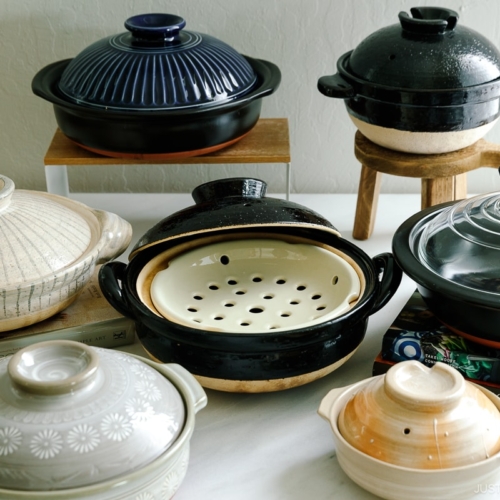
How to Season Your Donabe (Japanese Clay Pot)
Materials
- 2 Tbsp uncooked Japanese short-grain white rice (alternatively, you can use cooked rice; read the instructions below)
- water
Instructions
To Season the Donabe
- Fill 80% of the donabe with water. Add 2 tablespoons of uncooked short-grain white rice or 1 rice bowl of cooked Japanese rice.
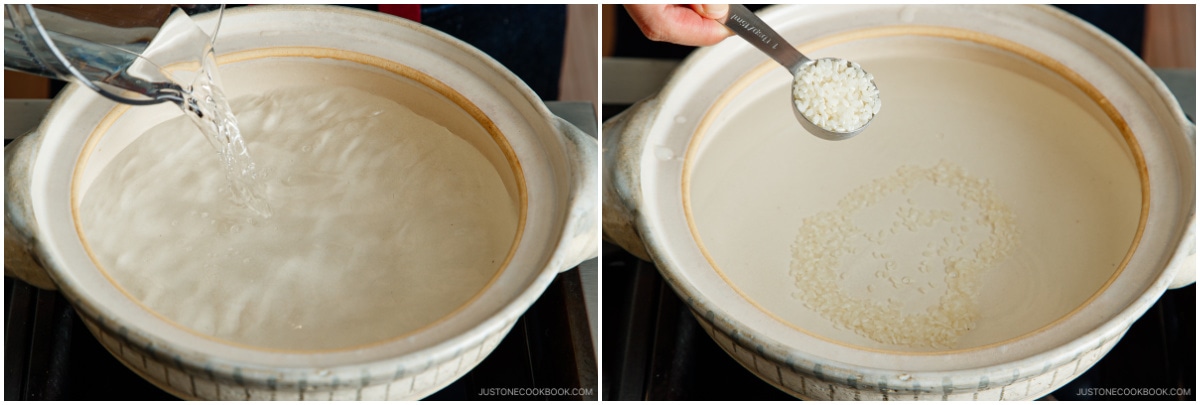
- Slowly bring it to a boil on medium-low heat. Stir the water and rice thoroughly.
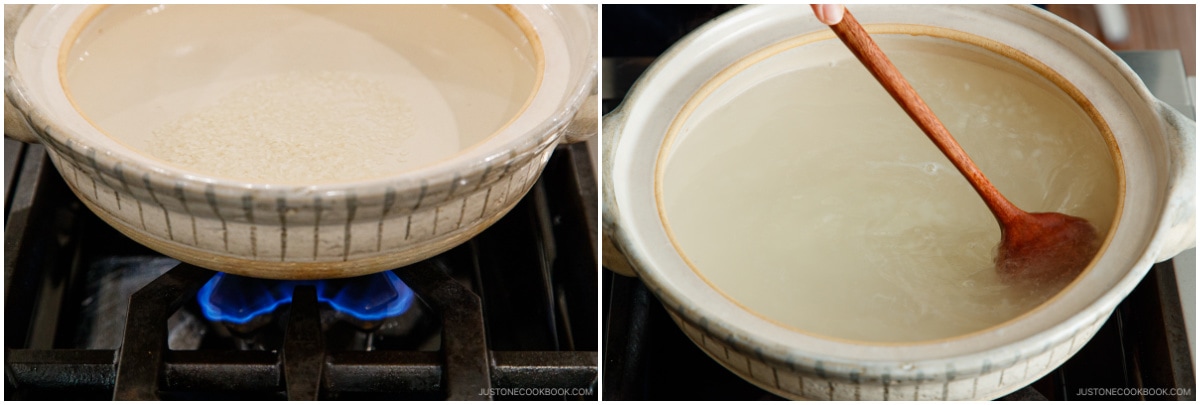
- Once boiling, reduce the heat and simmer the porridge on low heat for 1 hour. Tip: If repairing hairline cracks in your donabe, simmer for 2 hours, but make sure the bottom of the pot does not burn.
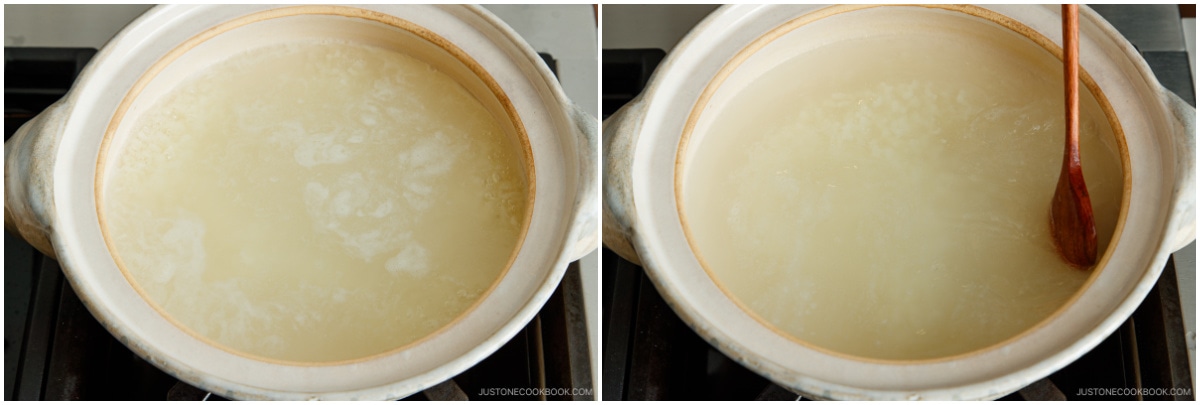
- Turn off the heat. Leave the donabe with the thick porridge to cool to room temperature. It will probably take more than 1 hour to reach room temperature.
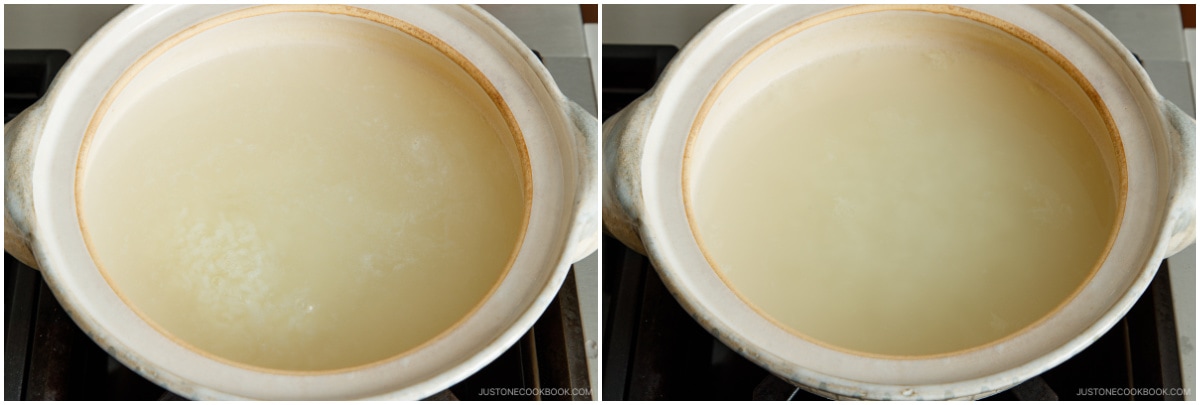
To Wash the Donabe
- Your donabe must be at room temperature before washing; otherwise, it may crack. First, discard the thick porridge. Then, rinse the donabe with a sponge and warm water. You can use a small amount of gentle soap, only if needed, but rinse quickly. DO NOT soak your donabe in water (or soapy water) as the donabe has good absorbency.
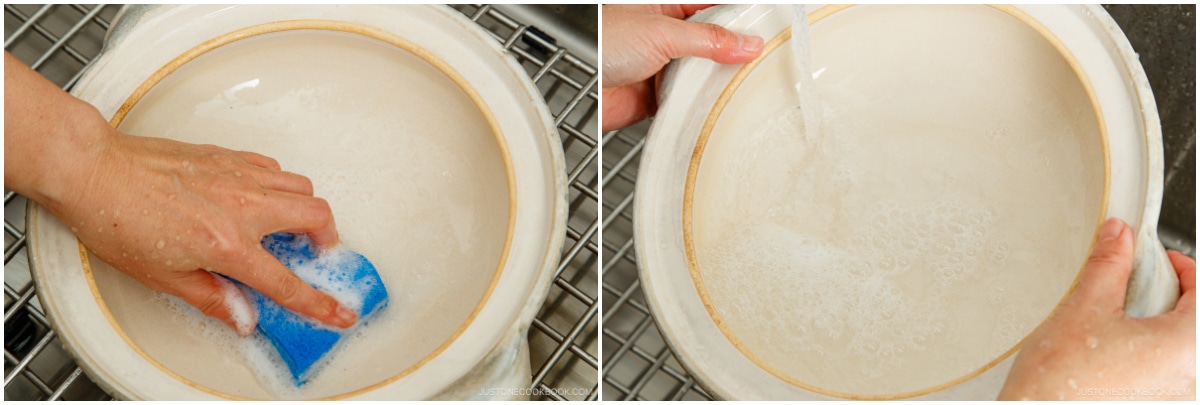
To Dry the Donabe
- Immediately dry the donabe with a clean towel. Allow it to air dry completely, keeping it upside down overnight, before the first use or storage.
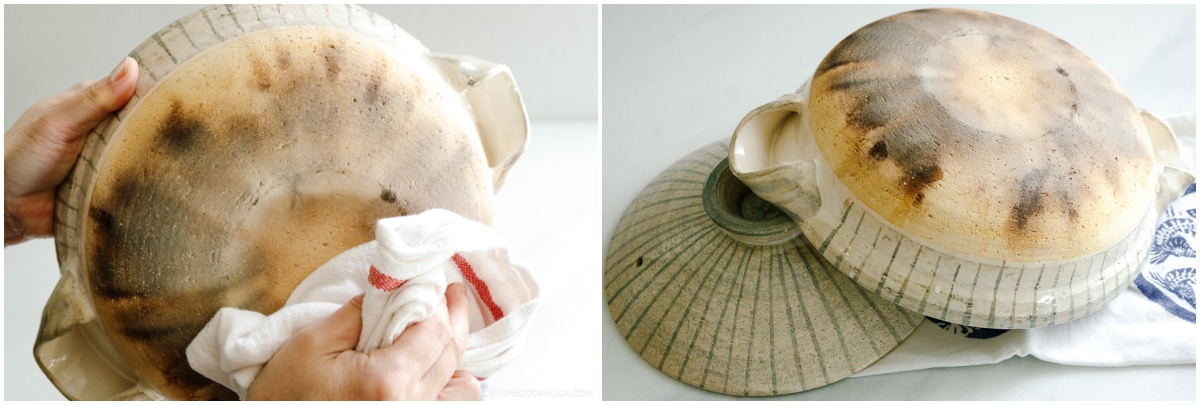
Donabe Troubleshooting
How to fix hairline cracks:
It is normal to have hairline cracks. When you observe these cracks, you will need to re-season the pot. Using cooked rice works best, as it contains more starch and is thicker, effectively filling in the pores. If the water still leaks, you may need to consider purchasing a new one.
What to do when the donabe is burnt:
No matter how careful you are, the pot may end up burnt from the food you’re cooking inside. Here’s a helpful tip to remove stains or burns.
- Add water and bring it to a boil.
- Turn off the heat and let the pot soak, cooling naturally.
- Once cooled, discard the water and gently scrub the burnt area with a soft sponge.
- Repeat a few times if the stains or burns remain.
How to remove odors:
Donabe has many small pores that may absorb smells from cooking certain foods. Here’s what you can do to remove them.
- Tea leaves: Put water and used tea leaves in your donabe and bring to a boil. Let it sit for 30 minutes and rinse under warm running water.
- Baking soda: Bring water to a boil and then turn off the heat. Add baking soda and set aside for 30 minutes. Rinse under warm running water.
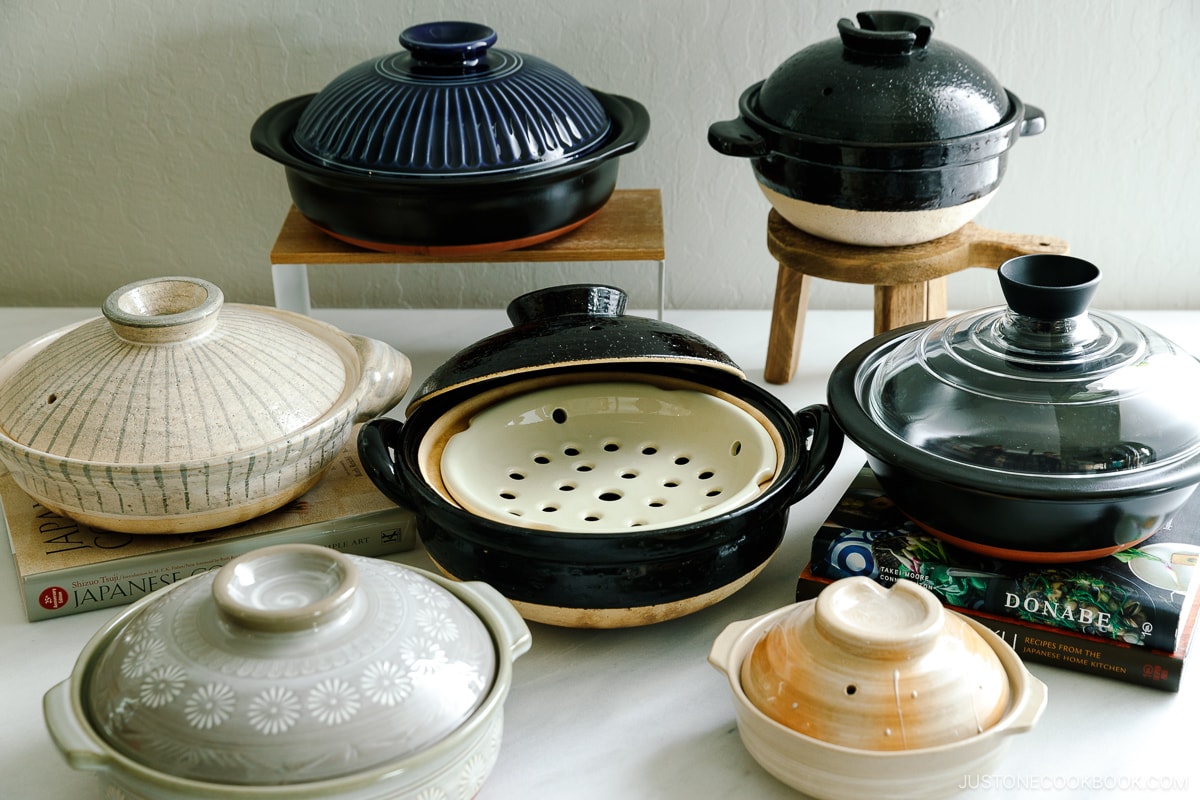
Delicious Donabe Recipes
Here are some of the hot pot recipes that you might enjoy!
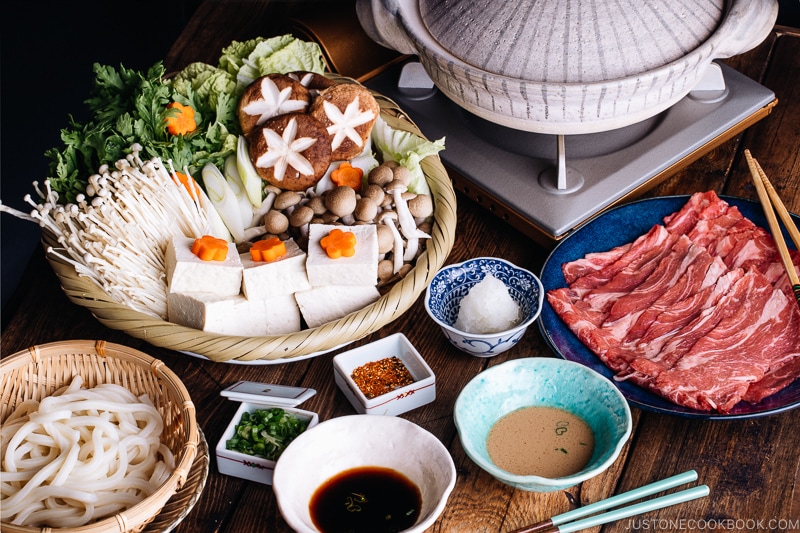
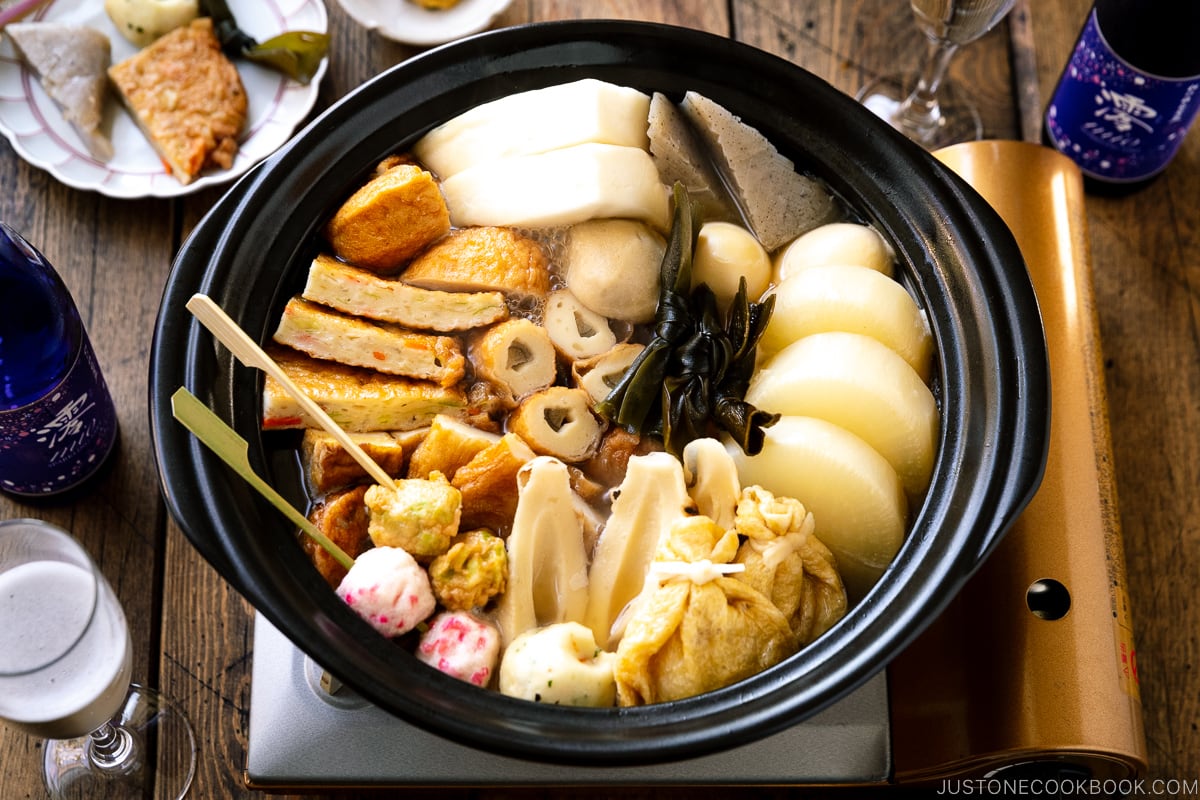
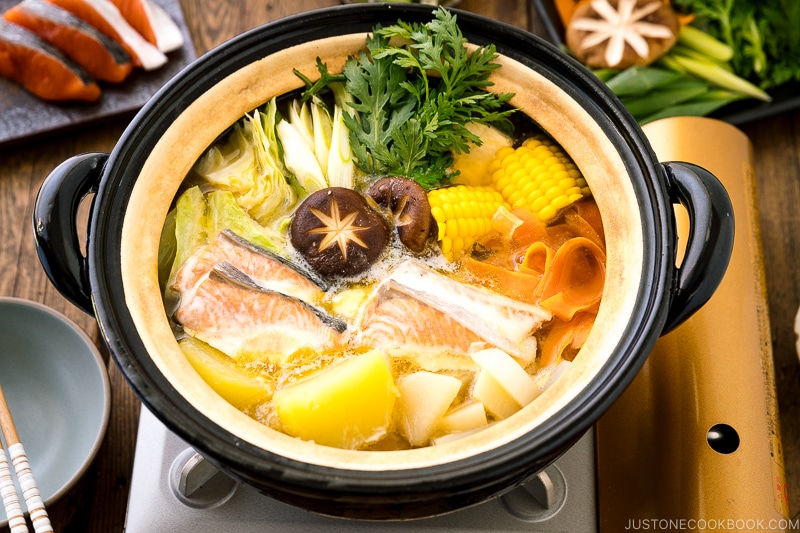
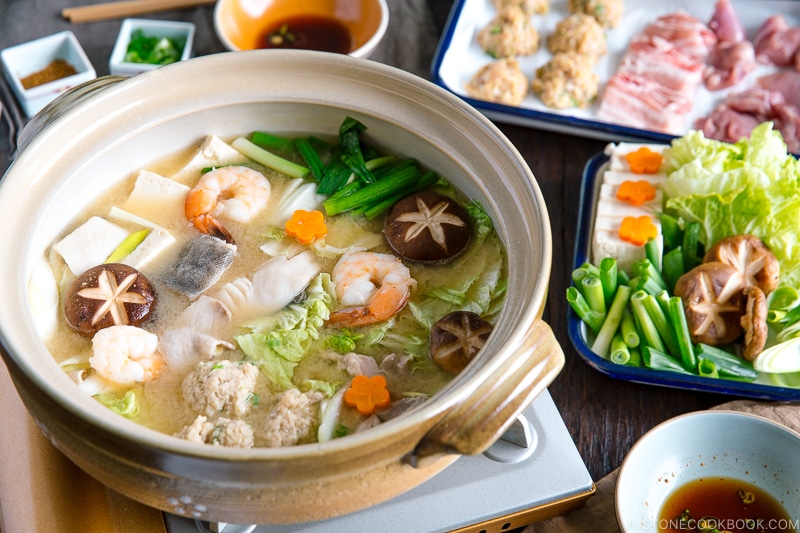
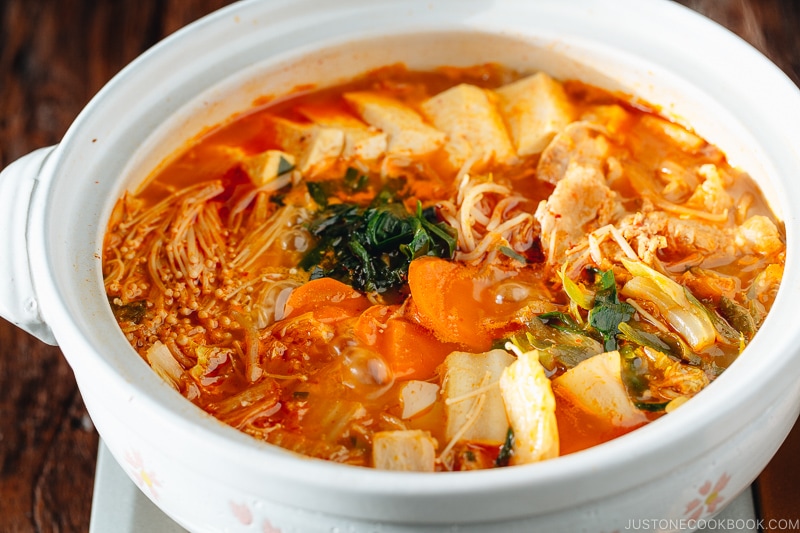
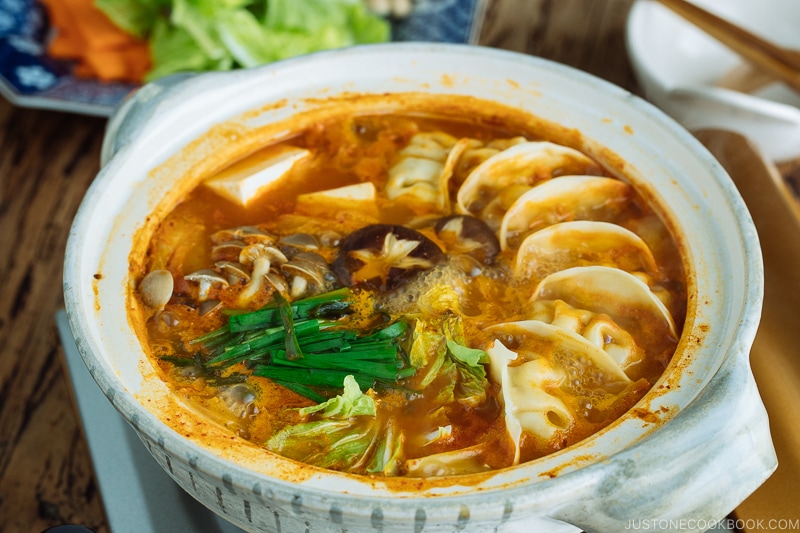
Editor’s Note: This post was originally published on February 9, 2016. It was republished with more helpful information on March 5, 2024.
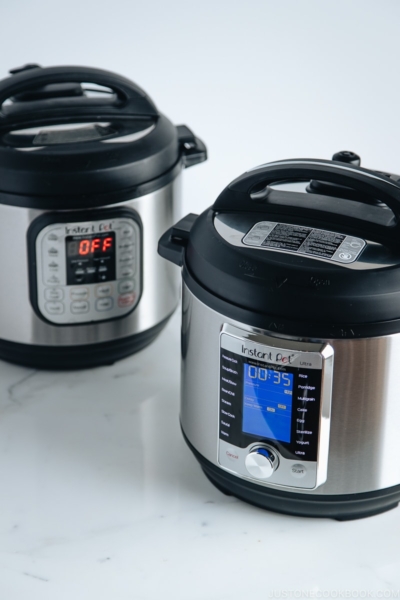
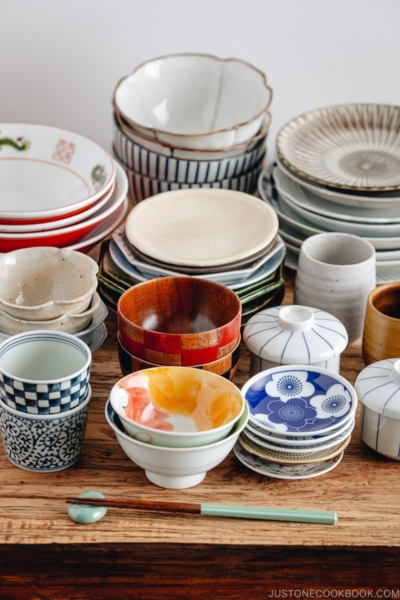
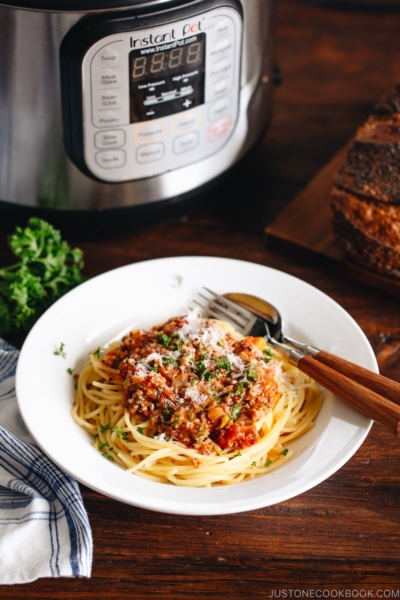





We got a Donabe for Christmas from our kids a few years ago and finally used it for the first time following your recipe. It came out great and had it a few more times since then. We seasoned the Donabe following your instructions, but the inside of the pot nearest the cover has discolored a bit. Kind of like a white ghosting of the potato starch is left near the rim. Is this normal or is there a way to clean this off so the entire inside of the pot is back to original color?
Hi Rick, Thank you so much for reading Nami’s post and trying out her recipes!🤗
Over time, it’s normal for a Donabe to develop a patina and show some discoloration. If you’d like to clean it up a bit, you can try gently scrubbing it with a paste of baking soda and water. Hope this helps!
Should I lid my donabe while seasoning it? I found mine at a local thrift store in near-perfect condition (it had a few stains but otherwise didn’t have a single chip anywhere) and decided to season it just in case. Thank you for the instructions!
Hello, Ysabet! Thank you for reading Nami’s post.
You don’t have to close the lid while seasoning the donabe. Congratulations on your Donabe. We hope it brings you many years of love!